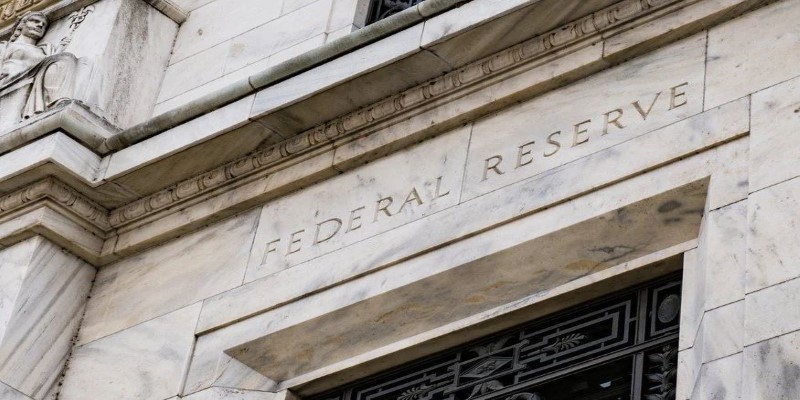Bank Discount Rate: A Guide on What it is and How it Works
Susan Kelly
Dec 03, 2023
The most possible reason why you ended up on this article is because you heard about the Bank Discount Rates but did not know what it was. So, to nudge up your knowledge on it a bit, you decided to surf the internet and were led here.
Well, lucky for you, you have landed on the right page. Understanding complicated terms related to the banking and investment sector can be complex. However, to ensure that you fully understand most aspects thoroughly, we have concluded a detailed guide on what bank discount rates are and how they work. Hop on below!
What is a Bank Discount Rate?
When you first heard about the Bank Discount Rate, we are sure you would have thought about what it is. Well, let us break it down for you. The Bank Discount Rate is an interest rate for short-term money market instruments like Treasury Bills or the Commercial Papers. These rates are based explicitly on the instrument's par value and the total amount of the discount.
Wondering what par value is? Well, let us give you an insight into it as well. The Par value is basically the original value of the investment when it was initially issued. The bank discount rate then happens to be the required rate of return, which the bank guarantees for safer investments.
Types of Bank Discount Rates
Though people believe that the discount rate is a singular number or value, that is not the case. In fact, the Federal Reserve actually has three rates it uses for the discount window, which majorly depends on the bank that it is lending to. Here are the three different types of bank discount rates:
Primary Credit Rate
The primary credit rate is the rate which is offered to most of the financial institutions. This particular rate is usually set at about one percentage point higher than the federal funds rate – which is the rate the Federal Reserve has suggested for commercial banks to lend to each other.
When discussing the discount rate in general, it is the primary credit rate that is referred to.
Secondary Credit Rate
This rate is offered to banks that do not enlist or qualify for the primary credit rate. This particular rate is around 0.5 percentage points higher than the primary credit rate.
Seasonal Credit Rate
The seasonal credit rate is a specialized interest rate designed to assist smaller banks in obtaining funds to address their specific local borrowing requirements, which usually fluctuate with the seasons. These needs often pertain to businesses such as vacation resorts, schools, students, and farming operations.
The rate in question is determined by averaging market rates that are relevant to the particular focus area.
How Does it Work – Understanding the Bank Discount Rates
By computing the bank discount rates, investors can ascertain the net profit they will accrue from specific money market investments when they retain those investments until they reach their maturity stage. This net profit is subsequently represented as a percentage of the initial cost of the investment.
Some securities in this aspect are issued at a discount to par. This means that the investors are allowed to purchase the saif securities at a lower price compared to how they would have been stated at the regular par value.
The bank discount rate method is the primary method that helps calculate the interest earned on the non-coupon discount investments. However, what users should consider is that these bank discount rates take into consideration the simple interest and not the overall compound interest. Hence, the bank discount rates are relative to the par value and not relative to the overall purchase price.
Who Sets the Bank Discounts Rate?

While you must have learned about what bank discount rates are and how they work by now, we are sure one question for sure must have popped up in your head. What is it? Well, who sets these discount rates, of course? Well, lucky for you, we have this answer covered for you as well.
The bank discount rates are essentially interest rates established by the board of directors in each regional Federal Reserve Bank. Every 14 days, the board of directors of each regional Federal Reserve Bank determines an interest rate for primary credit window loans.
The Board of Governors of the Federal Reserve System then sits together to approve the discount rate, which looks similar in all different regions. The Bank Discount rates since October 31st, 2019, have been set at a primary rate of 2.25% and a secondary rate of 2.75%.
Why Are the Bank Discounts Rate Important?

Implementing the Bank Discount Rates is essential, and there is a reason behind it. Basically, these discount rates help steer or align the Federal Reserve's monetary policy. This particular policy is responsible for regulating the supply and demand in the country and ultimately affects the trust in a nation's currency.
Wrapping Up!
If you are someone who heard about the bank discount rates but had absolutely no idea as to what they were, then we hope this article was helpful for you to get a clear view of what it is and its overall working dynamics. We understand that the banking sector can be hard to understand as an outsider or someone who is trying to get a gist of it. However, we did try to summarize and explain everything to the best of our capabilities. Let us know whether you found this article useful and whether or not you have any more related information to add.







